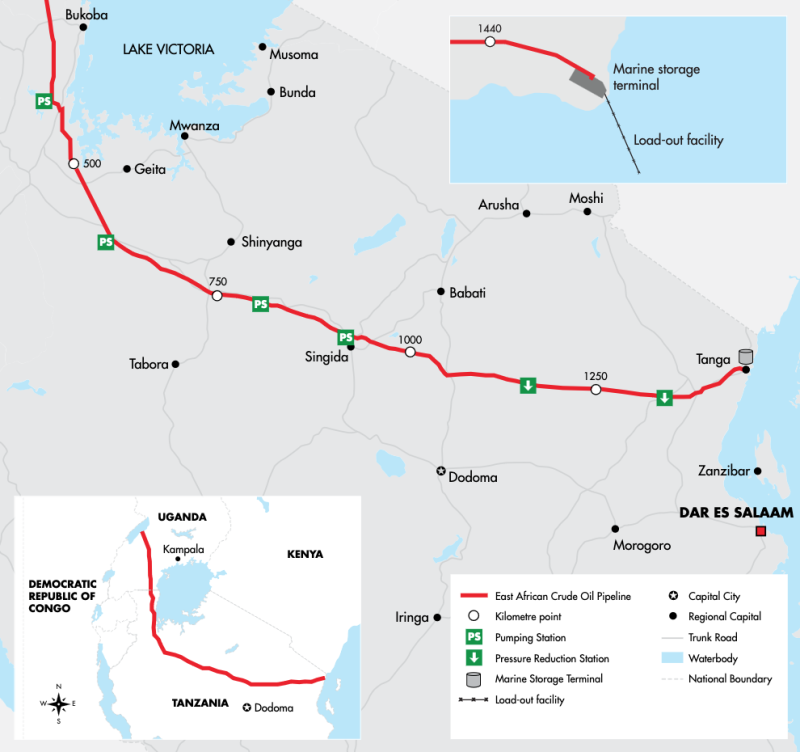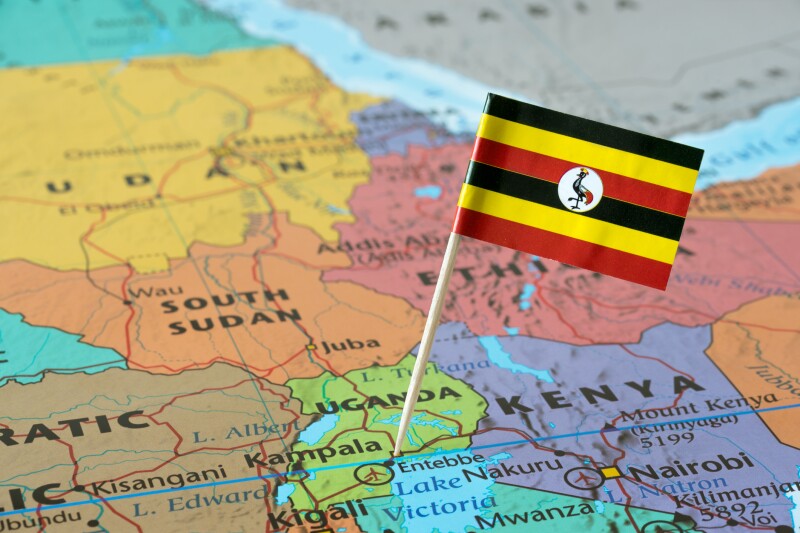Uganda is betting its future on the development of its oil and gas riches, while it simultaneously unveils an energy transition plan to be financed by profits from those same hydrocarbon sales.
The East African country anticipates a “long-term economic uplift” over the next 25 or more years as oil and gas revenues pour $8.6 billion into Uganda’s GDP as production from the Lake Albert development comes on-stream in 2025, Uganda’s Minister of Energy and Mineral Development, Ruth Nankabirwa Ssentamu, told journalists in Kampala.
Citing the “last in, last out” approach to reducing hydrocarbon production that was discussed at the 28th UN Climate Change Conference (COP28) in Dubai in December, “Uganda and other developing nations (will have the opportunity) to develop their resources and attain the same advantages enjoyed by longer-established oil producers,” Ssentamu said during a quarterly press briefing on 23 January.
“Having benefited for decades, established oil-producing nations are better positioned to reduce their output first,” she said. Given global demand for oil and gas, COP28 recognized the need for a gradual transition with industrialized nations exiting fossil fuels before developing nations do so.
Uganda unveiled a transition plan to invest its oil and gas revenues in making electricity available to all of its citizens by 2030 along with cleaner cooking options.
Uganda’s Flagship Oil and Gas Projects
The country’s $6 billion to $8 billion Tilenga and Kingfisher upstream projects are expected to produce 190,000 B/D and 40,000 B/D of crude oil at peak, respectively. The minister also noted that new exploration licenses near existing projects as well as in the center and east of the country would likely keep Ugandan crude flowing beyond 2050.

Uganda’s mid- and downstream projects include the $5 billion East African Crude Oil Pipeline (EACOP) (Fig. 1) that will transport Uganda’s crude exports across Tanzania to the Indian Ocean, and the $4 billion Hoima Refinery which aims to end the country’s dependence on product imports.
Combined with the government's infrastructure investments, the overall commitment represents a $20 billion investment in Uganda's economy, Ssentamu said.
France’s TotalEnergies operates Tilenga while China’s CNOOC operates Kingfisher. TotalEnergies holds 56.67% in the upstream project overall; CNOOC, 28.33%; and Uganda’s national oil company UNOC,15%.
Drilling Underway at Tilenga Project
Drilling started at Tilenga in June 2023 with 25 wells drilled to date, Ssentamu said in her briefing. The project envisions 426 wells to be drilled across 31 well pads, utilizing three rigs operated by the Chinese oilfield service provider ZPEB.
Over 85% of the industrial area including a 190,000-bbl central processing facility and drilling support base has been assigned to contractors including Schlumberger, China Oil Services Limited Uganda, ZPEB, Vallourec, McDermott, and Sinopec.
Ongoing construction of a central processing facility at Buliisa in western Uganda includes foundational work for pipe racks, site clearance for horizontal directional drilling, and flowline construction within Murchison Falls National Park.
Eighty percent of the detailed engineering design by McDermott and Sinopec in London has been done with completion expected by July, while Uganda’s Pearl Engineering Ltd. is building access roads, Ssentamu said.
The Kingfisher Development Area Project
Development of infrastructure at Kingfisher—including a 40,000-bbl processing capacity and 31 wells across four well pads, feeder pipelines, and high-voltage transmission lines—is ahead of schedule, according to the minister. Drilling began at Kingfisher in January 2023 and 11 producer wells have been drilled to date.
China Offshore Oil Engineering Company and China Petroleum Engineering and Construction Corporation are the main contractors for the central processing facility under construction at Buhuka flats in Kikuube. Design and procurement are managed in China, with on-site construction and installation progressing in Bugoma.
Doubling Down on Exploration Drilling, New License Areas
Uganda’s recent exploration moves include:
- Oranto Petroleum, a privately held Nigerian producer, and Australia’s Armour Energy expect to start exploration drilling this year while they continue to acquire and interpret seismic data under terms of Uganda’s first licensing round in 2017.
- UNOC and DGR Energy Turaco Uganda SMC Ltd. received exploration licenses in February and May 2023 for the Kasuruban and Turaco contract areas, respectively. The awards marked the end of a second bid round that began in 2019.
- The Ministry is continuing to study the Moroto-Kadam Basin and plans to initiate similar studies in the Kyoga and Hoima Basins.
Australia’s DGR Energy owns a majority stake in Armour Energy.
The Big Picture: EACOP and East Africa’s First Major Refinery
Following the award of a construction license in January 2023, EACOP issued contracts for construction and line pipes. In Tanzania, Nyanza Roads Ltd. and JV Spec have handed over main camps and piping yards to China Petroleum Pipeline Engineering Company (Fig. 2).

Production will be exported from the port of Tanga in Tanzania where photovoltaic plants and batteries are being considered to reduce carbon emissions by up to 30%, according to EACOP’s website.
TotalEnergies owns a 62% stake in the EACOP cross-border pipeline with Uganda’s UNOC holding 15%, Tanzania’s TPDC (15%), and CNOOC (8%).
Further downstream, Uganda signed a memorandum of understanding on 22 December 2023 with the UAE’s Alpha MBM Investments to finance construction of the planned 60,000 B/D refinery at Hoima. Negotiations started in January and are expected to conclude in April.
Alpha MBM is a UAE-based investment house led by Sheikh Mohammed bin Maktoum bin Juma Al Maktoum, a member of the Dubai royal family.
The Hoima refinery will be East Africa’s first major refinery and is intended to end landlocked Uganda’s reliance on imported refined products which currently flow through Tanzania or Kenya. Uganda currently imports 90% of its refined oil products via Mombasa, supplemented by flows through Dar es Salaam.
The liquefied petroleum gas to be produced there is integral to Uganda’s energy transition plan as a clean cooking initiative, the energy minister underlined in her briefing.


